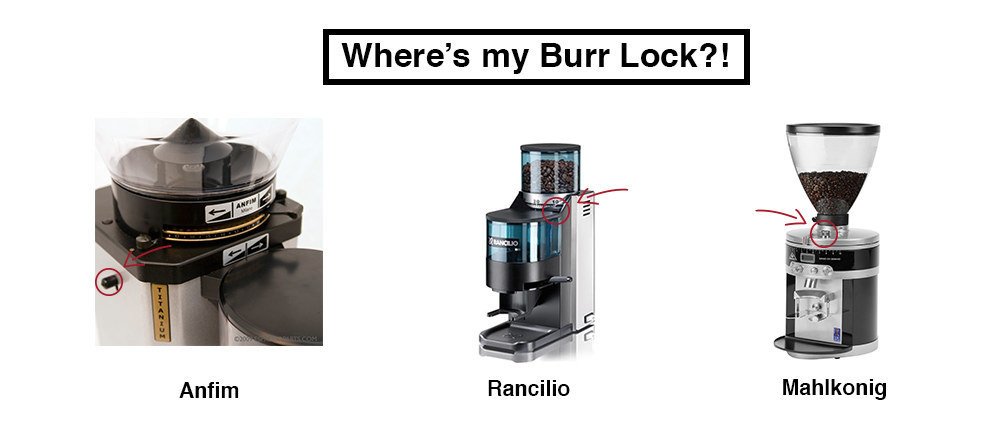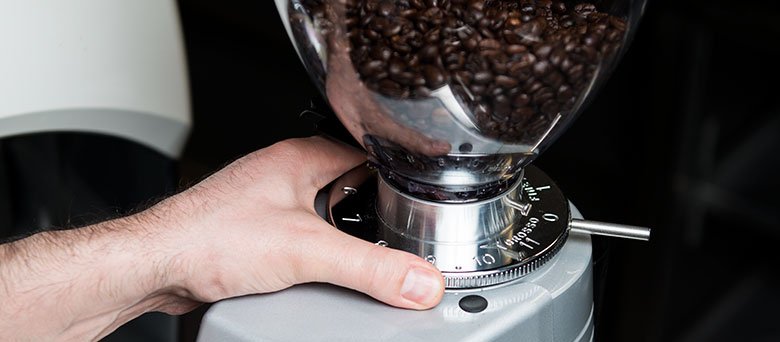Have you ever found yourself wondering how to adjust the coffee grind size on your machine? Well, look no further! This article will provide you with a simple and straightforward guide to help you achieve the perfect cup of coffee every time. Whether you prefer a fine grind for your espresso or a coarse grind for your French press, we’ve got you covered. So, get ready to elevate your coffee game and unlock the full potential of your machine with these easy-to-follow tips. Let’s get grinding!

Overview
What is coffee grind size?
Coffee grind size refers to the coarseness or fineness of the coffee grounds that are used for brewing. It is an important factor in determining the flavor, strength, and overall quality of your coffee.
Why is it important to adjust grind size?
Adjusting the grind size is important because it directly impacts the extraction of flavors from the coffee grounds. Different brewing methods require different grind sizes to achieve the desired flavor profile. By adjusting the grind size, you can customize the taste and strength of your coffee to suit your preferences.
Understanding Grind Size
What is grind size?
Grind size is the measure of how finely or coarsely coffee beans are ground. It refers to the particle size of the coffee grounds, which can range from very fine to very coarse.
Different types of grind size
There are various grind sizes used in coffee brewing, including:
- Extra Fine: This grind size is almost powdery and is commonly used for Turkish coffee.
- Fine: Fine grind is similar to table salt and is typically used for espresso.
- Medium: This grind size is similar to sand and is suitable for drip coffee makers.
- Coarse: Coarse grind is similar to kosher salt and is used for French press and cold brew.
How grind size affects flavor
Grind size plays a crucial role in the extraction process. Finer grind sizes increase the surface area of the coffee grounds, resulting in faster extraction and a stronger flavor. On the other hand, coarser grind sizes have a slower extraction rate, leading to a lighter and less intense flavor. By adjusting the grind size, you can control the extraction process and tailor the flavor of your coffee to your liking.
Determining the Ideal Grind Size
Considering the coffee brewing method
To determine the ideal grind size, you need to consider the coffee brewing method you are using. Different methods require different grind sizes to achieve optimal results. For example:
- Espresso machines: Espresso requires a very fine grind size to ensure proper extraction within a short brewing time.
- Pour-over coffee: Pour-over methods, like the V60 or Chemex, typically require a medium grind size for a balanced extraction.
- French press: French press brewing calls for a coarse grind size to prevent the grounds from passing through the filter and to facilitate a longer steeping time.
Experimenting with different grind sizes
The ideal grind size can vary depending on factors such as the coffee beans used, brewing equipment, and personal taste preferences. It is recommended to experiment with different grind sizes to find the one that produces the best flavor for your specific setup. Gradually adjust the grind size and note the flavor changes until you achieve the desired taste.
Adjusting Grind Size on a Machine
Finding the grinding setting
If you are using an electric coffee grinder, it usually comes with different grinding settings that allow you to adjust the grind size. These settings are typically marked on the grinder’s dial or control panel, ranging from fine to coarse. Refer to the instruction manual or the manufacturer’s guidelines to locate the appropriate setting.
Step-by-step guide for grind size adjustment
- Start by emptying the coffee grinder and make sure it is clean.
- Familiarize yourself with the grinder’s settings and find the reference point for your desired grind size.
- Begin with the setting that aligns with your reference point.
- Grind a small amount of coffee beans and inspect the resulting grounds.
- If the grind size is too coarse, move the setting towards a finer option. If it is too fine, move it towards a coarser option.
- Repeat the grinding and inspection process until you achieve the desired grind size.
- Remember to brew a sample batch of coffee using the adjusted grind size to confirm the flavor.

Grind Size Conversion Chart
Converting grind size measurements
When adjusting the grind size, it is helpful to have a grind size conversion chart. This chart allows you to convert between different grind measurements and ensure consistency across brewing methods. You can find conversion charts online or create your own based on your preferred grind sizes.
Using a conversion chart for precision
By using a conversion chart, you can easily switch between grind sizes and ensure that the coffee grounds are consistent across different brewing methods. This can be especially useful if you regularly switch between brewing methods or when sharing recipes with others. Keep a conversion chart handy, either printed or saved digitally, for quick reference.
Troubleshooting
Common issues related to grind size adjustment
Sometimes, adjusting the grind size may not yield the desired results. Here are some common issues you may encounter:
- Over-extracted coffee: If your coffee tastes overly bitter and harsh, it may be a sign of over-extraction. In this case, try using a coarser grind size to decrease the extraction.
- Under-extracted coffee: If your coffee tastes weak and lacks flavor, it may be under-extracted. Try using a finer grind size to increase the extraction.
- Uneven extraction: Uneven extraction can result in a combination of over- and under-extracted flavors in a single cup. This usually indicates inconsistencies in grind size or brewing technique.
How to fix grind size problems
If you encounter any issues with your grind size adjustment, here are a few steps you can take:
- Reassess your brewing method: Make sure you are using the appropriate grind size for your brewing method.
- Double-check the grinder settings: Ensure that you have selected the correct grind size on your machine.
- Adjust in small increments: Gradually adjust the grind size in small increments to fine-tune the flavor.
- Experiment with extraction time: If your extraction is consistently off, you can also experiment with adjusting the brewing time to compensate for any inconsistencies in grind size.
- Seek professional advice: If the issue persists, it may be beneficial to consult with a professional barista or coffee expert who can provide personalized guidance based on your specific circumstances.

Cleaning and Maintaining the Grinder
Importance of regular cleaning
Regular cleaning of your coffee grinder is essential to maintain its performance and prevent flavor contamination. Coffee oils and residues can accumulate over time, affecting the quality of your brews. Cleaning also helps prevent clogs and ensures consistent grind sizes.
Tips for grinder maintenance
To keep your coffee grinder in optimal condition, consider the following maintenance tips:
- Empty and clean the grinder after each use.
- Use a brush or toothpick to remove any stuck coffee particles.
- Periodically deep clean the grinder by disassembling and cleaning each component, following the manufacturer’s instructions.
- Avoid grinding oily or flavored beans, as they can leave residue and potentially clog the grinder.
- Regularly check the burrs or blades for any signs of wear and replace them when necessary.
Alternative Methods for Grind Size Adjustment
Using a manual coffee grinder
Manual coffee grinders offer a more hands-on approach to adjusting grind size. They typically consist of a hand-crank and adjustable burrs or blades. By manually grinding the coffee beans, you have more control over the grind size. Simply adjust the settings on the grinder and rotate the hand-crank to achieve your desired grind size.
Using a burr grinder
Burr grinders are known for their precision and consistency in grind size. They utilize two burrs, one stationary and one rotating, to gradually crush the coffee beans into evenly-sized particles. Burr grinders often come with various grind settings, making it easier to adjust the grind size according to your needs. These grinders are highly recommended for those seeking a more precise and reliable grind size adjustment.

Grind Size Recommendations for Different Brewing Methods
Grind size for espresso
Espresso requires an extra-fine or fine grind size to produce a concentrated and flavorful shot. The fine grind allows for a quicker extraction, resulting in a rich and intense beverage. Adjust the grind size to fine-tune the extraction time and achieve the desired espresso flavor.
Grind size for pour-over
Pour-over brewing methods, such as the V60 or Chemex, typically call for a medium grind size. This grind size ensures a balanced extraction, allowing the water to flow through the grounds at a controlled pace. Adjust the grind size as needed to achieve the desired brew time and flavor clarity.
Grind size for French press
French press brewing requires a coarse grind size to prevent the coffee grounds from passing through the metal filter. The larger particles allow for a longer steeping time, resulting in a full-bodied and rich cup of coffee. Experiment with the grind size to achieve the desired strength and texture in your French press brew.
Choosing the Right Grinder
Factors to consider when purchasing a grinder
When selecting a coffee grinder, consider the following factors:
- Burr or blade grinder: Burr grinders are generally preferred for their consistency, while blade grinders are more affordable but may produce uneven grind sizes.
- Grind size settings: Look for a grinder that offers a wide range of grind size settings to cater to different brewing methods.
- Durability and quality: Invest in a grinder made of high-quality materials that will withstand regular use and maintain a consistent grind.
- Price range: Consider your budget and find a grinder that offers the best value for your money.
Types of grinders available
There are different types of coffee grinders available on the market:
- Blade grinders: These use spinning blades to chop the coffee beans. They are generally less expensive but may produce inconsistent grind sizes.
- Burr grinders: Burr grinders crush the beans between two burrs, resulting in a more consistent grind size. They are often more expensive but offer better precision and control.
- Manual grinders: Manual grinders require hand-cranking and offer more control over grind size. They are portable and suitable for those who enjoy a hands-on coffee brewing experience.
- Electric grinders: Electric grinders are powered by electricity and usually come with various grind settings. They offer convenience and efficiency for grinding large quantities of coffee quickly.
In conclusion, adjusting the grind size is an essential skill for any coffee lover. By understanding the different types of grind sizes, experimenting with brewing methods, and knowing how to adjust the grind size on your machine, you can easily customize the flavor of your coffee. Regular cleaning and maintenance of your grinder, as well as exploring alternative grinding methods, will further enhance your coffee brewing experience. Remember to choose the right grinder for your needs, considering factors such as quality, durability, and budget. With these tips and recommendations, you can become a master at adjusting grind size and create the perfect cup of coffee every time.

